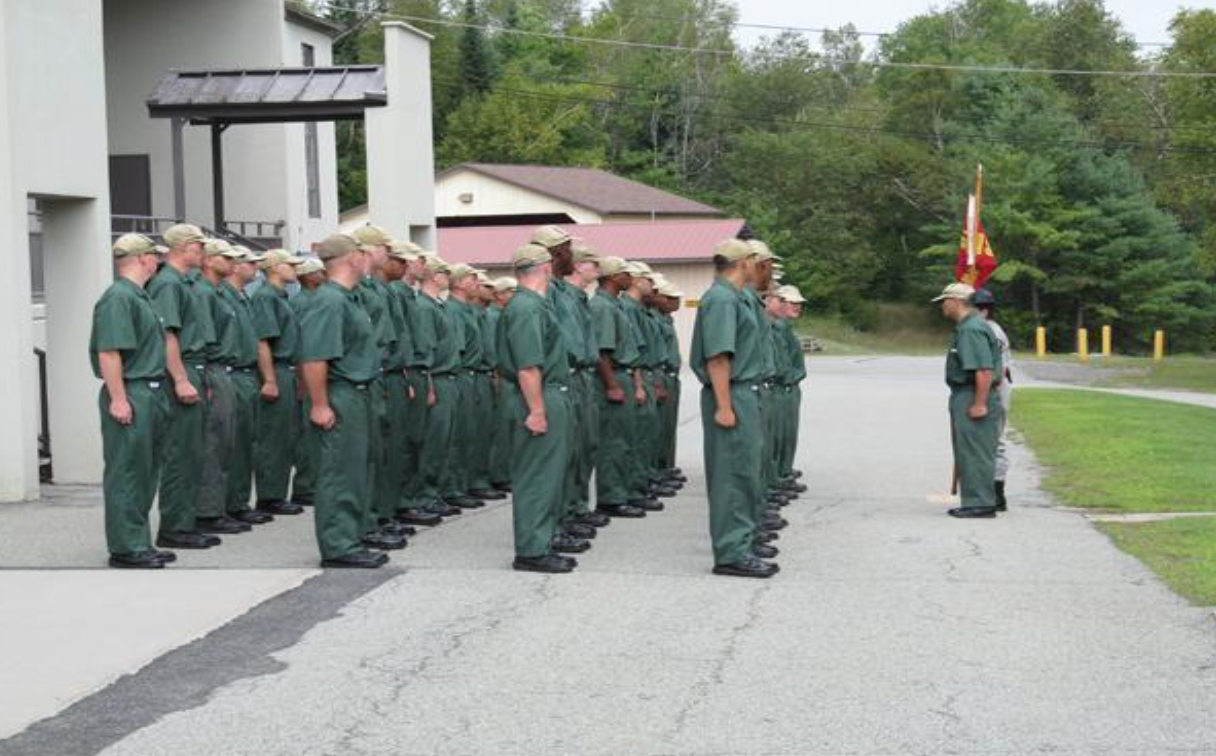David Carter
Another form of intermediate sanction may be seen in the creation of boot camps, also known as shock incarceration facilities. Again developed in the 1980s in Georgia, boot camps were targeted to youths and adults and seen as a way to alter individuals through a “shock” effect. Essentially, boot camps are programs designed to change the recidivism rate through a physical change. That is, designed on a militaristic ideal, boot camps valued that a regimen of strict physical exercise would teach structure and discipline in youths. Once again, because of a high level of face validity (this looks like it will work, so it must work), boot camps flourished in the 1980s and 1990s. Below is an example of one of the few remaining boot camps, Moriah, NY.
Boot Camp Success
While there some positive results, generally, boot camps fail to produce the desired reductions in recidivism. [1] For prosocial individuals, structure and discipline can be advantageous. However, when individuals of differing levels of antisocial attitudes, antisocial associates, antisocial temperament (personality), and antisocial (criminal history) are all mixed together, the reductions in recidivism generally do not appear. As we have discussed in the section on rehabilitation, criminogenic needs are often not addressed within boot camps. Thus, boot camps fail to reduce recidivism for several reasons. First, since boot camps fail to address criminogenic needs, they tend not to be effective. Second, because of the lower admission requirements of boot camps, individuals are generally “lumped” together into a start date within a boot camp. Therefore, high-risk offenders and low-risk offenders are placed together, building a cohesive group. Thus, lower-risk offenders gain antisocial associates that are high-risk. Finally, when boot camps emphasize the increase of physicality, rather than behavioral change, it generally does not reduce aggressive behavior (antisocial personality & recidivism). A recent meta-analysis (a study of studies of a topic) found this to be the case. [2] For more information on the status of boot camps, please see https://www.crimesolutions.gov/PracticeDetails.aspx?ID=5 .
Platoon Formation in a Boot Camp

- Parent, D. G. (2018). Research for practice: Correctional Boot Camps: Lessons from a decade of research. U.S. Department of Justice, Office of Justice Programs, National Institute of Justice (June 3rd), NCJ 197018 https://www.ncjrs.gov/pdffiles1/nij/197018.pdf ↵
- Wilson, D. B., MacKenzie, D. L., & Mitchell, F. N. (2005). Effects of correctional boot camps on offending. Campbell Systematic Reviews, 6, 1-42. ↵

